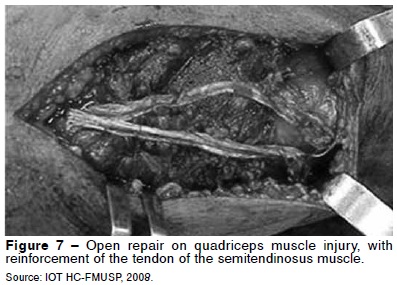Skeletal muscle tissue has the largest mass in the human body, accounting for 45% of the total weight. Muscle injuries can be caused by bruising, stretching or laceration. The current classification divides such injuries into mild, moderate and severe. The signs and symptoms of grade I lesions are edema and discomfort; grade II, loss of function, gaps and possible ecchymosis; and grade III, complete rupture, severe pain and extensive hematoma. The diagnosis can be confirmed by: ultrasound, which is dynamic and cheap, but examiner dependent; and tomography or magnetic resonance, which gives better anatomical definition, but is static. Initial phase of the treatment can be summarized as the "PRICE" protocol. NSAIDs, ultrasound therapy, strengthening and stretching after the initial phase and range of motion without pain are used in clinical treatment. On the other hand, surgery has precise indications: hematoma drainage and muscle-tendon reinsertion and reinforcement.
Muscle; Skeletal; physiopathology; Muscle; Skeletal; injury; Muscle; Skeletal; surgery; Regeneration









